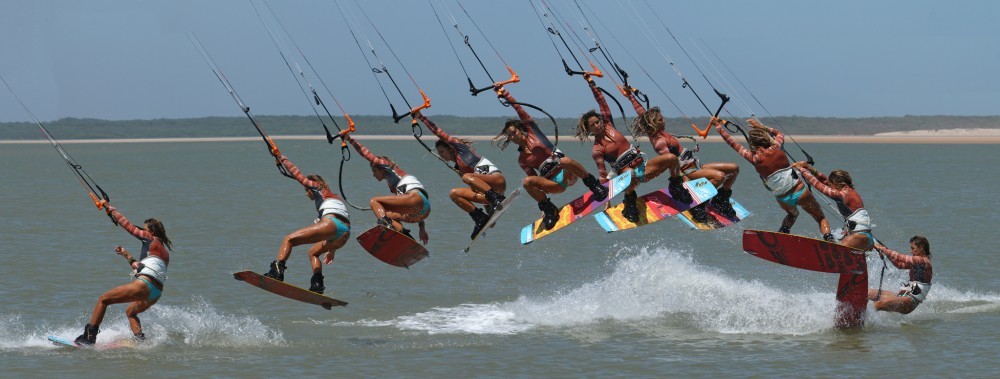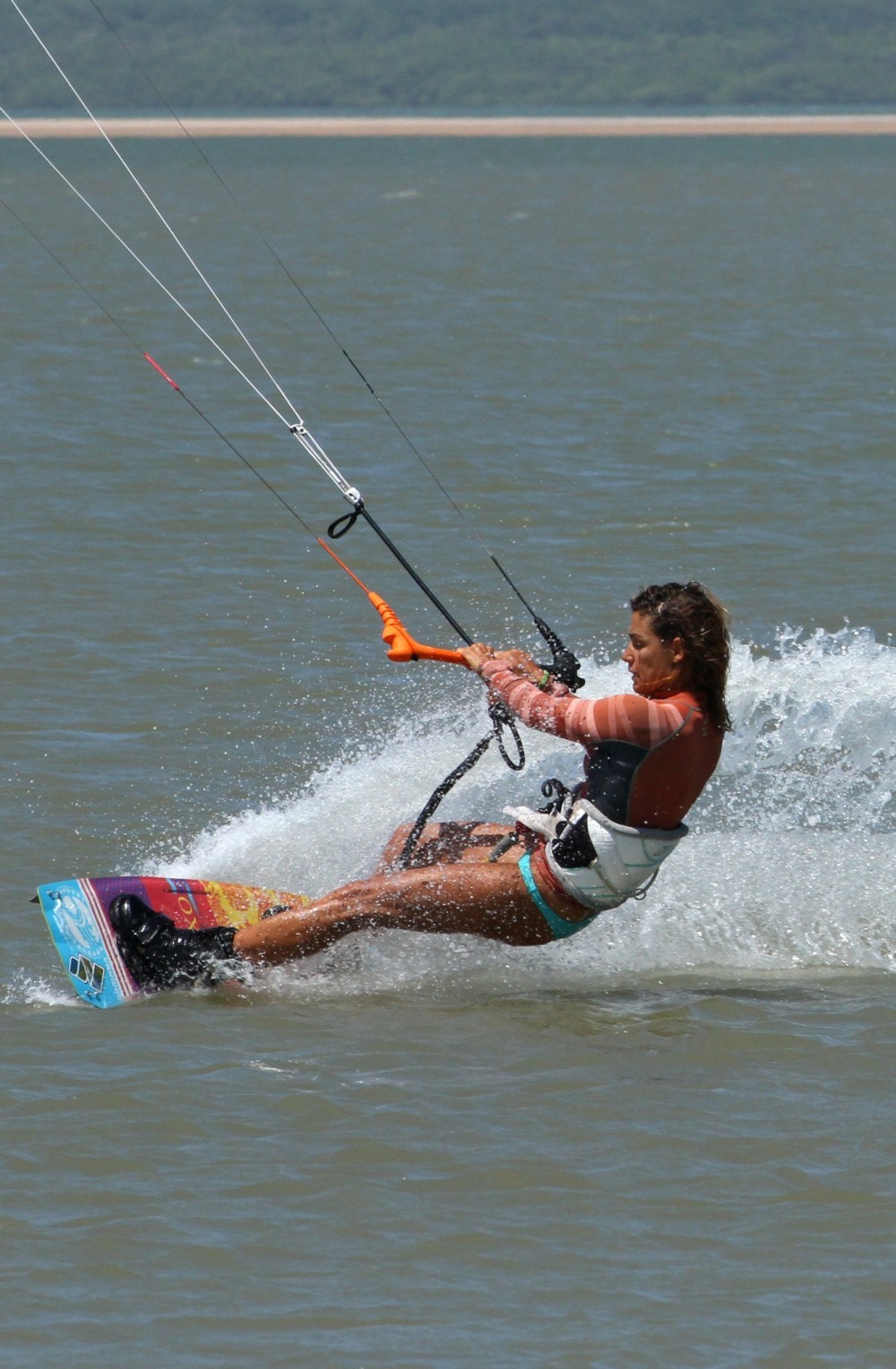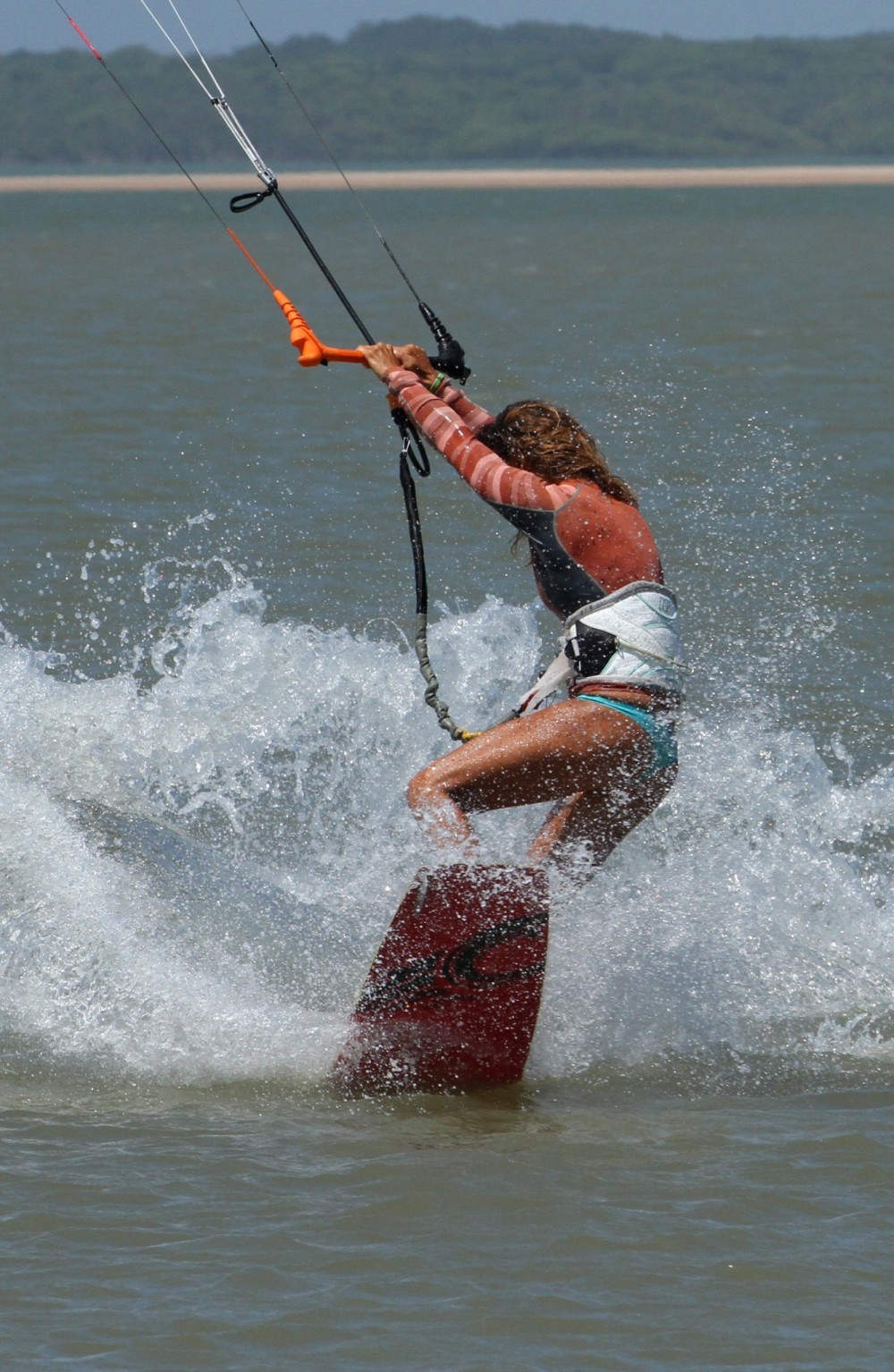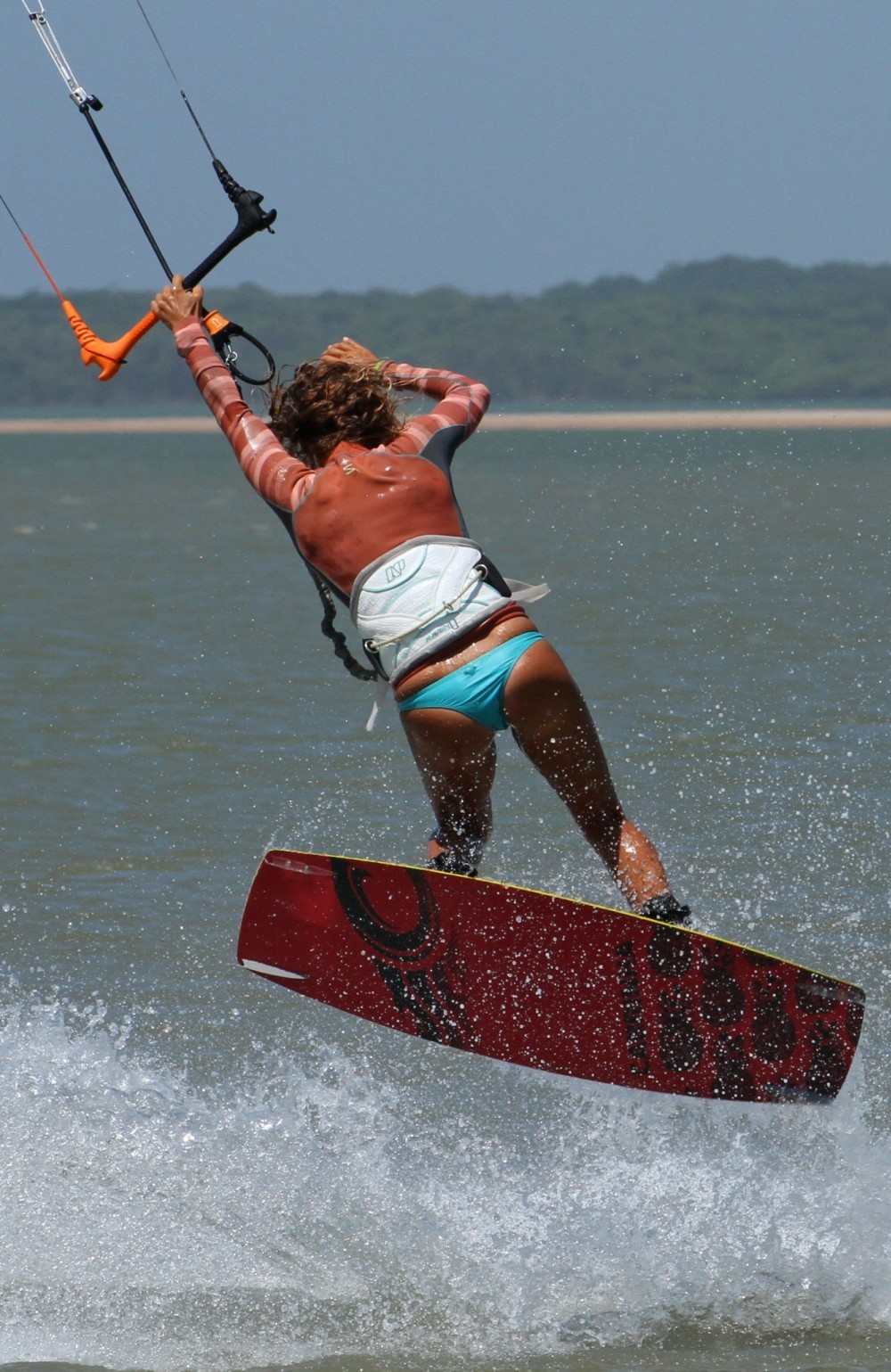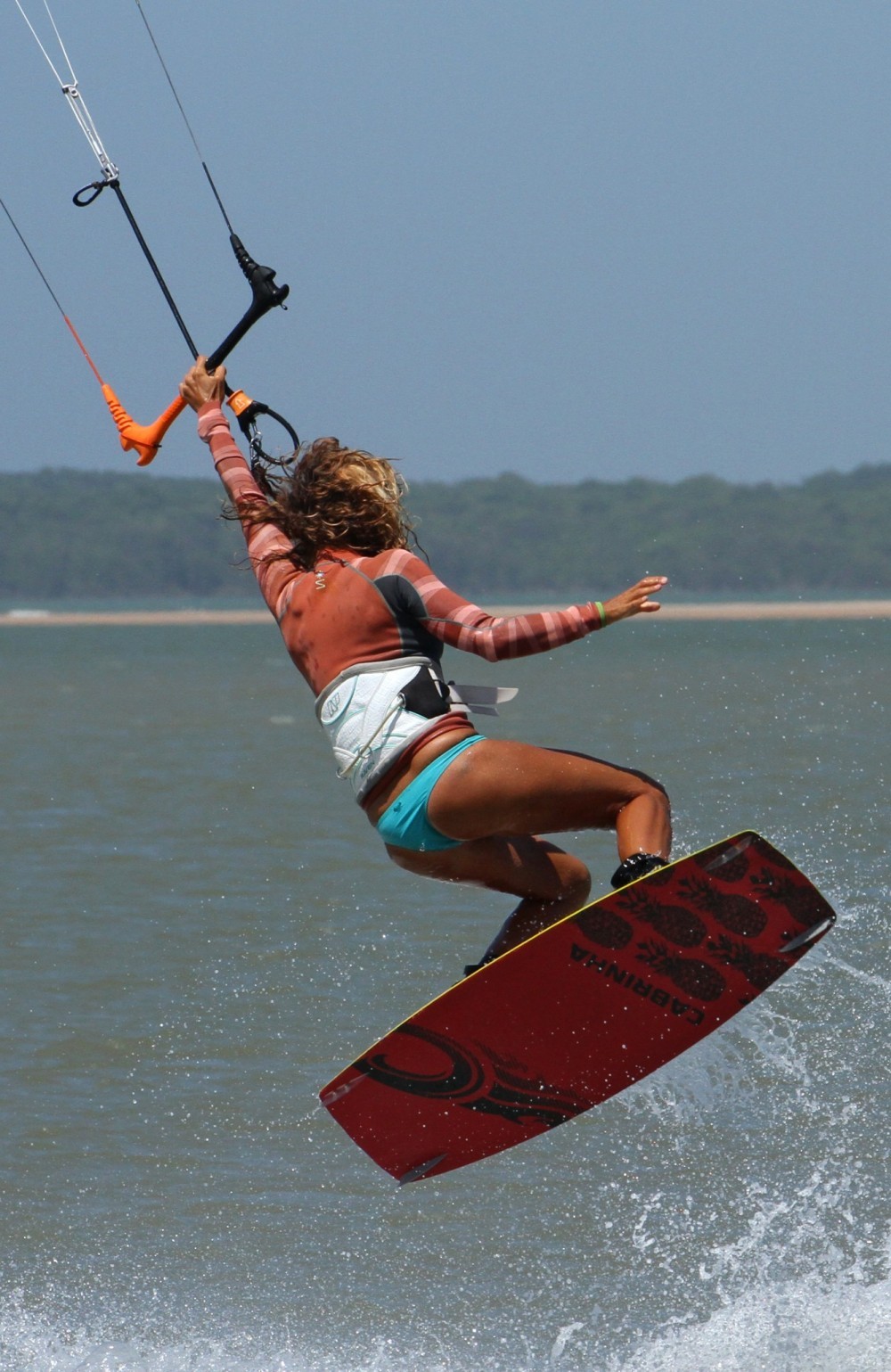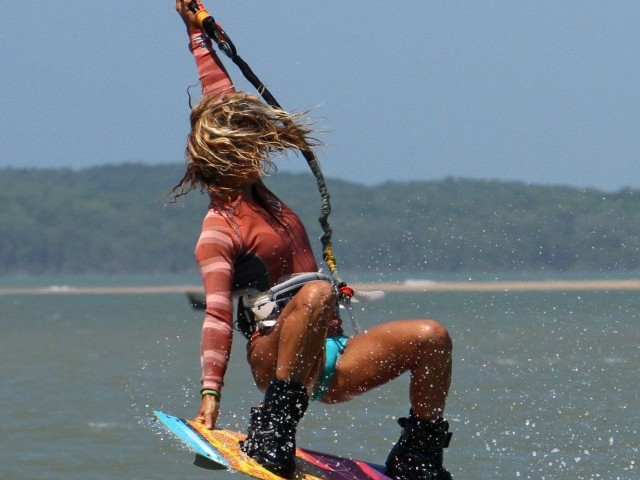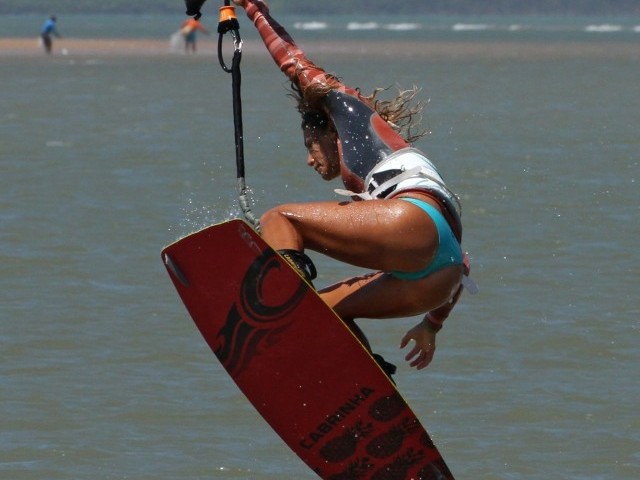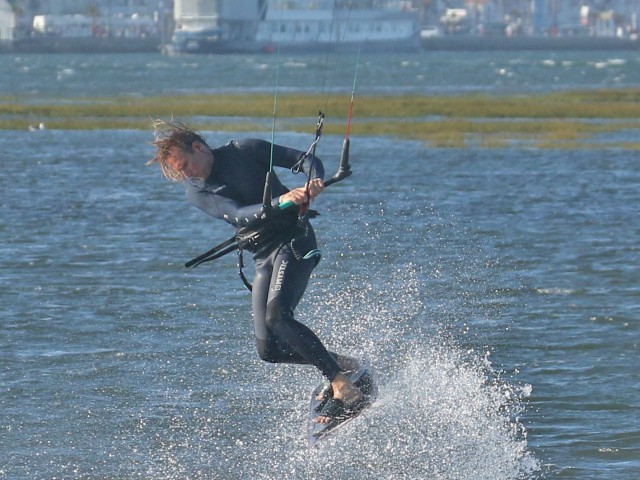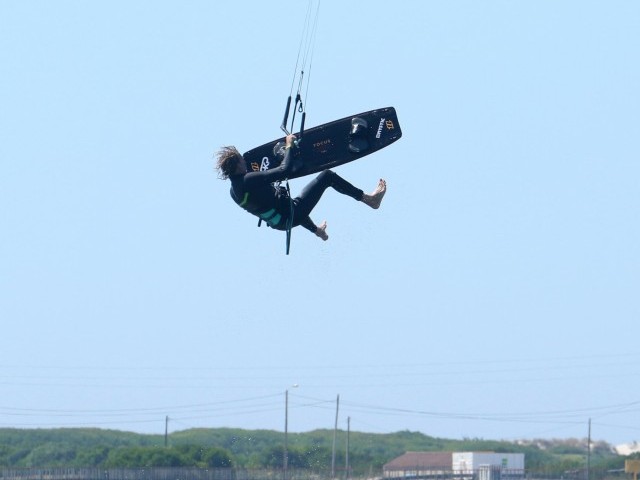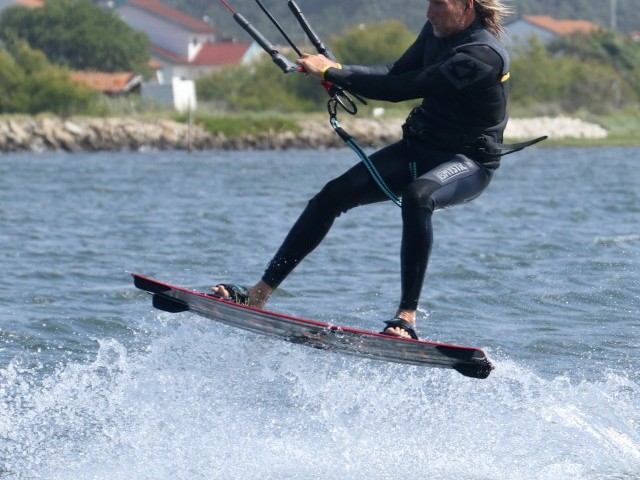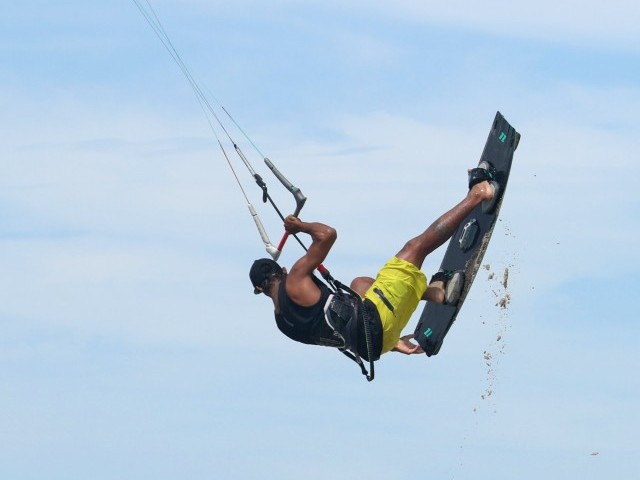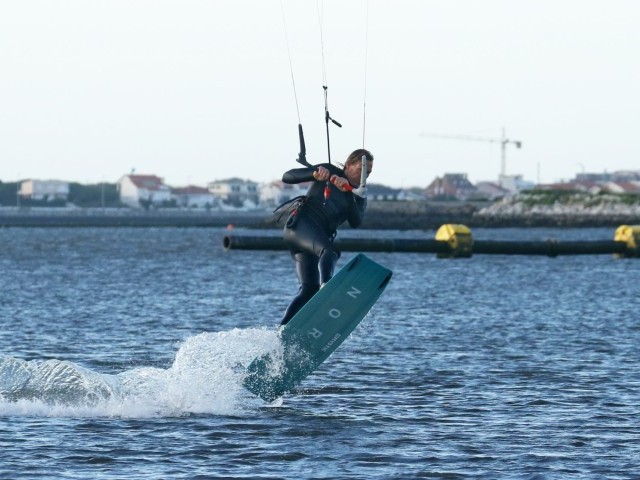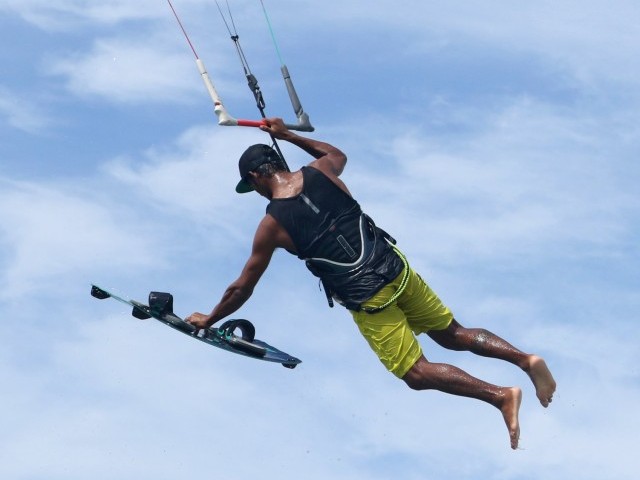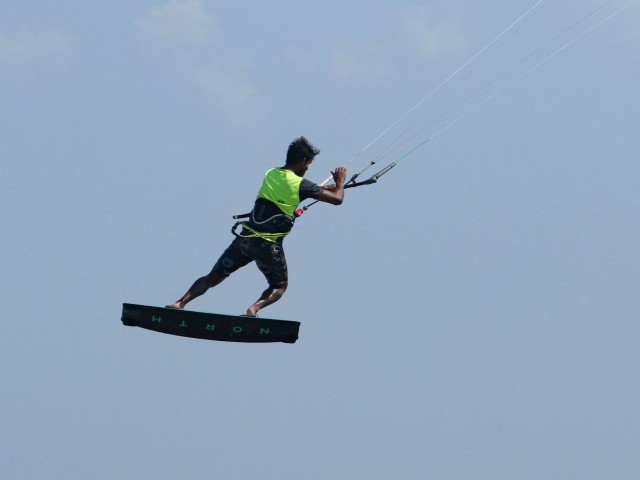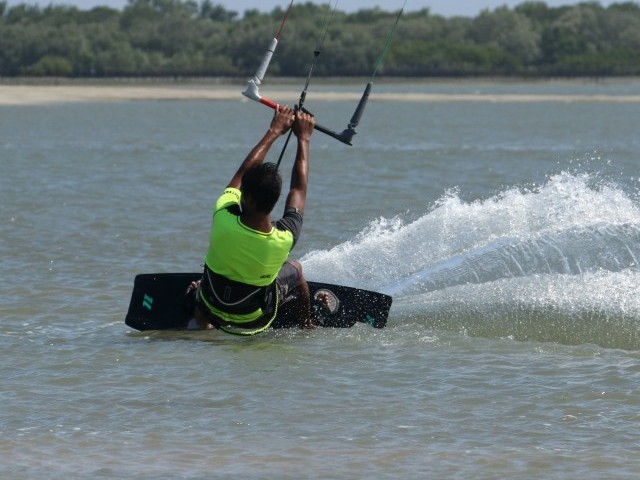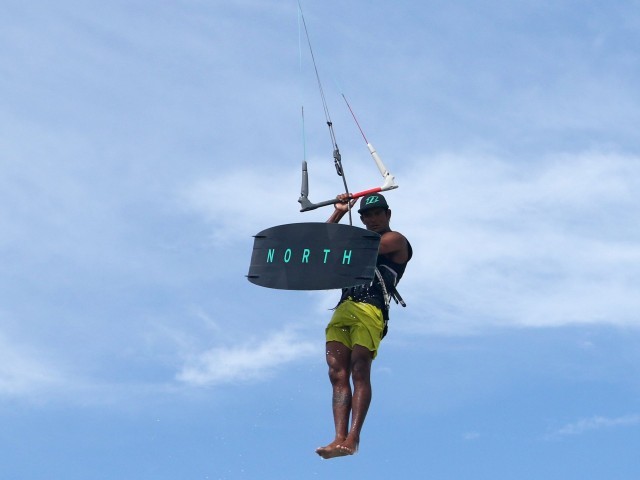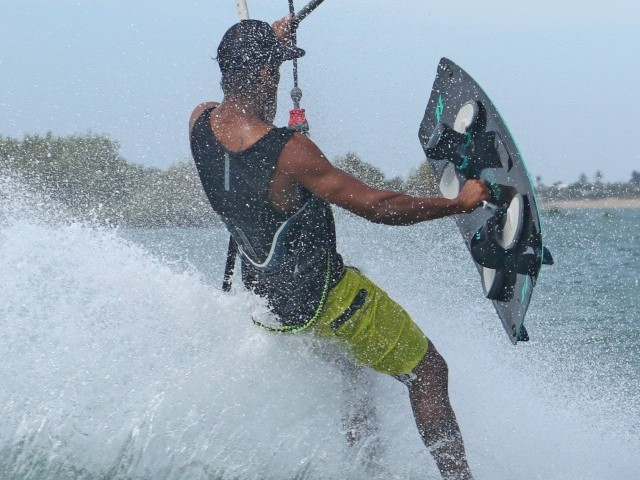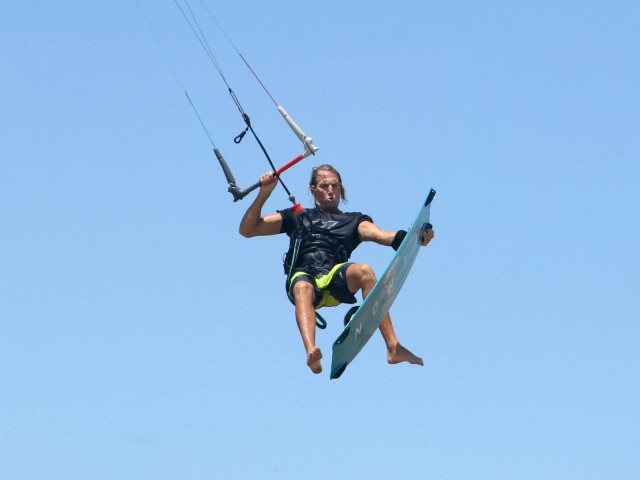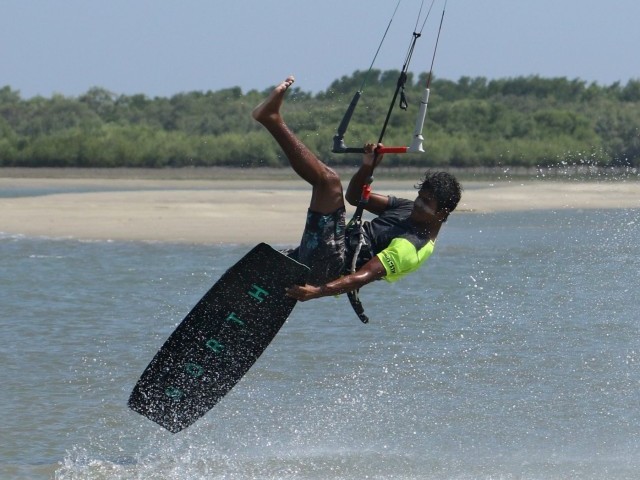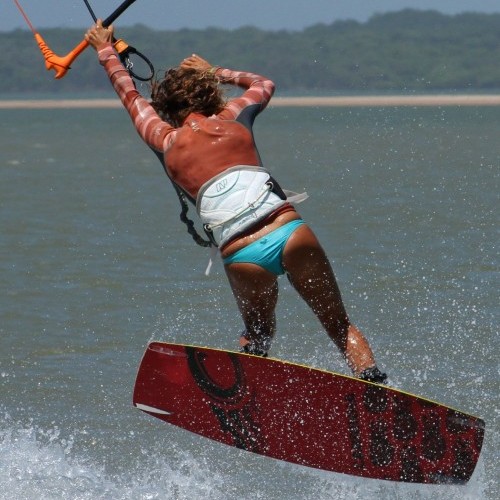
Unhooked Popped Front Grab
Technique / Advanced
Introduction
Here we go – unhooked grabs always seem like a good idea until you decide to try one, and the task ahead seems a little bit more daunting than the initial light bulb moment. That said, there’s no reason not to add some picante to your unhooked moves. We’ll start off here with the popped front roll with a tail grab. The front rotation lends itself to both a tail grab and a down wind landing, so it’s as good a place as any to start. Before we do, consider this: if a decent sent front loop allows you to grab for a second or so, then a rapid popped front won’t give you much time to claim it…
Precursors for this, definitely a solid unhooked popped front roll. In addition, you’ll need to set your kit up accordingly, more specifically you need to get your trim right. With two hands on the bar you may be able to muscle against a stalling kite, but with one hand it’s more than advisable to trim your sweet spot as close to your chicken loop as possible whilst still maintaining enough oomph to pop well.
As is our custom, lets have a more detailed look at a few key parts of this gem before we add it all together in one quick flash of reality.
It’s a Pop Trick Pic A
Being a pop trick all the usual “rules” apply. Karine has got her hips and weight back, with a slightly bent back leg and extended front leg. Her kite is around 11 o’clock, her bum is over the tail of the board and close to the water, her shoulders are back with her hands centred on the bar, and she has good speed. She has pushed the board off the wind and keeps the bar angled forward, parallel to the kite’s leading edge. The sudden change of direction allows her to unhook and then she immediately carves back up against the kite, which is the moment you can see in Pic A. One point to add is that unless you’re on a large kite it will be easier, and less surprising, if you can grip the bar with the centreline running in between your fingers. This way the kite won’t react violently when you release your back hand.
Don’t’ Wait Pic B
Admittedly there is more than not waiting, but it is the classic error on a popped front, and here for the grab even more so. To generate both the pop and reduce the pull in the kite you need to be dynamic and explosive. It is only too tempting to wait for the kite to pull you up, but you need to explode against your back leg as soon as you carve up to get more than enough pop. You can see that Karine is stamping hard and at the same time initiating her front roll by dropping her head and lifting her front knee. This moment will make or break your chances. You’re aiming for a quick rotation without too much tension in the lines – so stamp hard.
Commitment Pic C
Going for the grab, or at least dropping the back hand is something that you’ll need to do for the first time once. After that you’ll know that it actually doesn’t have it in for you and you can proceed to do it again and again. As soon as you leave the water and start your rotation you need to release your back hand. You can see that Karine’s arms are stretched out, and although counter intuitive, this will make it easier to hang on, unless you’ve got IAAF supplemented guns. If you pop with your arms in close, then when you release your back hand the bar will pull away, giving you the feeling of being over powered. If your arms are extended, then nothing changes and as a result you won’t feel anything and your confidence will remain intact.
Bring it Together Pic D
Just like any other grab, you’ve got to get the body parts moving to make it possible. As soon as you can, stretch your free arm down and bring your knees up. Bringing everything into place, with your hand down and your board up is even more vital here as you’ll be going for the grab by feeling rather than looking for it – there just isn’t time to process so you need to make it happen from muscle memory.
The Grab Pic E
If all goes to plan you should feel the board and be able to get a decent hold on it. For this reason the tail grab is the simplest to start with. You’ve probably done a truckload of them over your kiting career and it is the most natural and closest place to reach down to. You can see that at this point Karine is quite stretched out, but as long as she is travelling with the kite, a result of her pop and speed, there won’t be too much pressure. In this small together position she will be rotating quickly - so fingers crossed getting fully around won’t be a problem. The important part here is to keep the head turning and hold on tight. The good news is that with only your front hand on the bar the kite will be moving down and therefore pulling you through the move.
Landing Gear Down Pic F
With her head around and looking forwards to where she’ll land Karine can judge when to release her grab and drop her legs in anticipation of landing. That said, what the kite is doing will effect when you release your grab. The more it pulls the earlier you’ll need to release so that you can be balanced for your reception. If your kite is diving heavily off your front hand, your back hand will naturally want to come off early. However, if the move feels smooth you’ll have the confidence to hold on. As soon as Karine lands she’ll hurry to get her back hand back on the bar so that she can control the kite.
Top Tips
When you first learn this move make sure that your kite isn’t too low. With the kite higher you know that you have time to get around and reach for the grab, and more importantly, should the kite move quickly once you release there is more room for error and correction. However, having the kite higher should in no way mean that you pop less or later.
As already mentioned, try dropping your back hand from the bar during the rotation and then move on to grabbing it. This is a good step method to building your confidence.
Remember that time is short so the pop must be aggressive and the grab quick. It’s better for a short tickle than to try and slow your front rotation down, as that won’t work once you have the kite set at your preferred popping height, just below 11 or 1 o’clock.
So now you know what to concentrate on have a look at the videos and sequence to see the fully-fledged version and get an idea for how quick you need to be with the real time video.
Common Problems
We’ve touched upon a few of these already, but don’t be tempted to lift the kite in place of popping hard. With a very high kite not only will it be a different move, but it’ll also put a lot more strain on your front shoulder as in essence you’ll be hanging under the kite.
If your kite dives hard as soon as you release your back hand. On smaller kites and faster models this will always be a bit of an issue, although having your hand in the centre of the bar and your fingers split around the centre line will help no end. If you try and keep your arms in by pulling as you release, this will also dive the kite, so extend your arms and fool the kite that nothing has changed.
If you’re missing the grab, the chances are that you’re not bringing the back of the board up towards you enough post pop. So as soon as you extend, think about rolling into the rotation so that the tail comes up naturally as it would in a sent front roll.
Keystones
- Good speed, good trim, good off the wind.
- Explode early for big pop with extended arms.
- Roll into rotation and lift tail of board.
- Grab as you turn your head.
- Release as you spot landing.
This technique article was in Issue 54 of IKSURFMAG.
Related
By Christian and Karine
Christian and Karine have been working together as a coaching team, running improver to advanced kitesurfing clinics since 2003.






